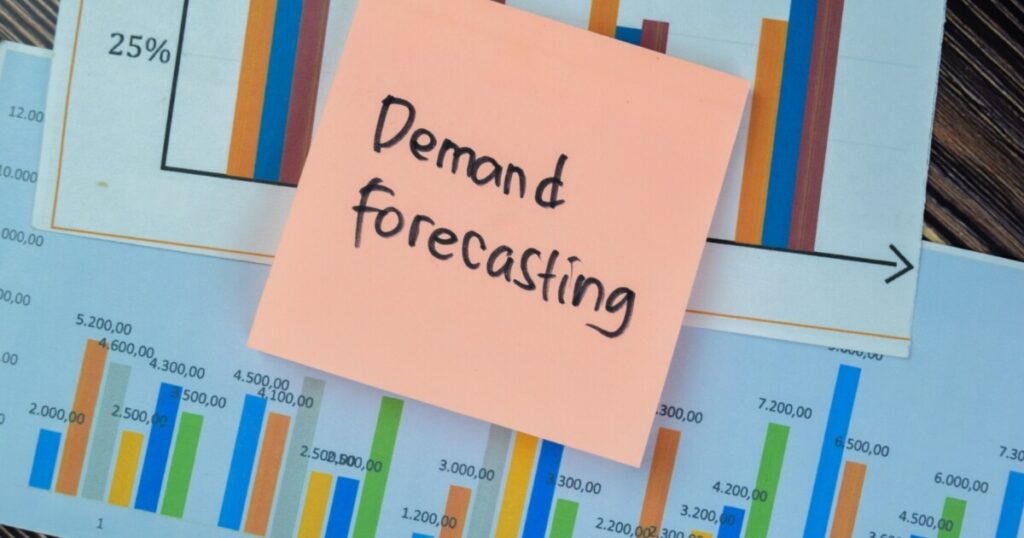Traditionally, inventory has been seen as a necessary cost, but a paradigm shift is underway, with companies beginning to recognize it as an investment. By reframing a mindset, organizations can unlock numerous benefits and optimize their supply chain management.
In this article, you will explore this shift in thinking and delve into the advantages of treating inventory as an investment.
What Is Inventory Investment?
Inventory investment refers to the amount of money a business allocates to acquiring and holding inventory, such as raw materials or finished goods. It represents the capital tied up in the company’s inventory and its surrounding costs, and how it plays a crucial role in a company’s financial health and operations.
Using Inventory Investment to Drive Business Growth
Inventory investment can be a powerful tool for driving business growth. By investing in the right inventory at the right time, businesses can increase sales, avoid excess inventory, reduce costs, improve customer satisfaction, and increase agility.
From Cost to Asset

In the past, companies used to think of inventory as something that cost them money and made their financial situation worse. It was like a heavy load on their financial resources and something that looked bad on their financial statements.
But now, things have changed. Companies have started to look at inventory differently, like an investment. This means they see inventory as something valuable that can make them money over time. By doing this, companies can take advantage of the profits they can make from their inventory as it gets used and sold. So, instead of being a burden, inventory has become an asset that helps companies grow and make money.
Improved Demand Forecasting

When inventory is perceived as an investment, the focus shifts toward understanding market demand and aligning it with production and procurement strategies. Accurate demand forecasting becomes crucial for optimizing inventory levels, ensuring that investment in inventory aligns with expected sales. This approach helps businesses avoid surplus or stockouts, leading to improved customer satisfaction and reduced costs.
Enhanced Cash Flow Management
When companies treat inventory as an investment, it means they’re managing their money more wisely. They avoid having too much unnecessary stuff in storage that ties up their money. Instead, they keep just the right amount they need for their operations. This approach helps them have more money available, which they can use to grow their business or invest in different areas. It’s about using money efficiently and improving their overall financial health.
Maximizing Product Lifecycle
Every product has a lifecycle and its value changes over time. By viewing inventory as an investment, businesses can strategically manage their inventory throughout the product lifecycle. This approach allows for proactive decision-making regarding price adjustments, promotions, or inventory liquidation, optimizing profitability and minimizing losses.
Leveraging Analytics and Technology

When companies start thinking of their inventory as an investment, they also use advanced computer tools and data to make it work even better. These tools help them understand what people want to buy and when. So, businesses can keep just the right amount of things in stock, not too much and not too little.
By using these smart tools, companies can use their money wisely and grab opportunities to make even more money from their inventory. This way, they can be successful and grow their business.
Want to know the value of your inventory?
How to Use Inventory Investment to Boost Retail Sales
Boosting retail sales through inventory investment involves several key strategies. Here are some tips on how to use retail inventory to boost retail sales:
Market Research
Conducting comprehensive market research is a valuable starting point. Retailers can analyze industry reports, trend forecasts, and consumer behavior studies to gain insights into emerging trends and changing customer preferences. This research provides a broader perspective on market dynamics and helps identify potential opportunities for new inventory.
Consumer Surveys and Feedback

Engaging with customers through surveys or feedback mechanisms provides direct insights into their preferences and desires. Retailers can collect feedback through online surveys, social media polls, or in-store questionnaires. By understanding customer needs and desires, retailers can align their inventory purchasing decisions with the latest trends.
Monitoring Social Media and Online Platforms
Social media platforms, blogs, and online forums serve as valuable sources of information for tracking trends. Retailers can monitor popular hashtags, influencers, and discussions related to their industry. Social listening tools can help retailers identify emerging trends, popular products, and consumer sentiments. This real-time data can guide inventory purchasing decisions.
Analyzing Sales and Inventory Data
Retailers can leverage their own sales and inventory data to identify trends. Analyzing historical data helps identify top-selling products, demand patterns, and seasonal variations. By identifying trends within their customer base, retailers can make informed decisions about purchasing inventory that aligns with those trends.
Collaboration with Suppliers and Manufacturers
Retailers can establish close relationships with their suppliers and manufacturers to stay informed about upcoming trends and new product releases. Regular communication with suppliers helps retailers gain early access to innovative products and exclusive offerings. Supplier collaborations can also facilitate joint trend research and development of customized inventory solutions.
Monitoring Competitors
Keeping an eye on competitors is essential for staying competitive and identifying trends. Retailers can analyze their competitors’ product offerings, marketing strategies, and customer engagement tactics. This analysis helps retailers identify gaps in the market and potential areas for differentiation. However, it’s important to focus on innovation and not solely replicate competitors’ strategies.
Collaborating with Trend Forecasting Agencies
Trend forecasting agencies specialize in tracking market trends across various industries. Retailers can subscribe to trend forecasting services or collaborate with agencies that provide insights into emerging trends, consumer behavior, and product innovation. These agencies can offer valuable guidance in identifying new inventory opportunities.
Conclusion
The paradigm shift in perceiving inventory as an investment rather than a cost is gaining momentum in today’s business landscape. By embracing this mindset, organizations can unlock numerous benefits such as improved demand forecasting, enhanced cash flow management, risk mitigation, and optimized product life cycles. Leveraging analytics and technology further strengthens the ability to make informed investment decisions.
Companies like Overstock Trader can help businesses identify and sell excess inventory, turning it into an asset. Ultimately, by treating inventory as an investment, businesses can transform their supply chains, drive profitability, and gain a competitive edge in the market.
Frequently Asked Questions
What is inventory investment, and why is it important for a company’s economic stability?
Inventory investment occurs when a company produces or purchases goods to be sold in the future. It’s important for a company’s economic stability because it represents the costs associated with inventory. Proper inventory management practices help maintain optimal inventory levels, reducing excess inventory or negative inventory investment, which can lead to cash outflows and instability.
How can a company calculate the cost of goods sold (COGS)?
To calculate the cost of goods sold (COGS), a company should subtract the ending inventory from the average inventory for a specific period. This provides an estimate of the cost of the goods that were sold during that time, which is crucial for financial review and stability.
What are the two reasons for fluctuations in inventory levels within a manufacturing firm?
Fluctuations in inventory levels within a manufacturing firm can occur due to changes in customer demand and the firm’s production output. These factors can lead to either an excess inventory or an inventory reduction, impacting the company’s economic stability.
How does inventory turnover indicate the efficiency of inventory management practices?
Inventory turnover is a ratio that reflects how quickly a company’s inventory is sold and replaced within a specific period, like quarterly. A higher inventory turnover suggests that a company is efficiently managing its inventory, producing or purchasing goods in response to customer demand, and avoiding excessive holding costs.
Can fluctuations in inventory levels predict the stability of a company’s economic performance?
Yes, fluctuations in inventory levels can be an indicator of a company’s economic stability, especially when examined in the context of broader economic indicators. For instance, a sudden and drastic increase in inventory may signify a decline in sales and potential economic troubles. Conversely, an inventory reduction could indicate an optimistic outlook or an effort to control costs.

